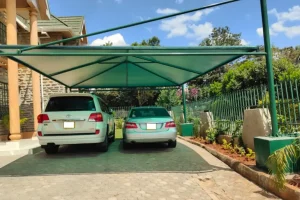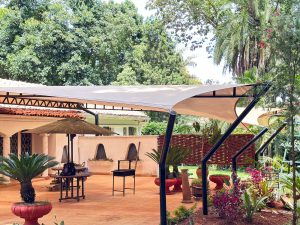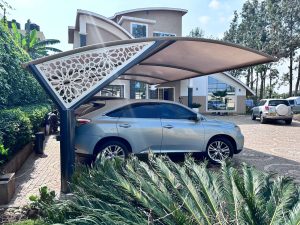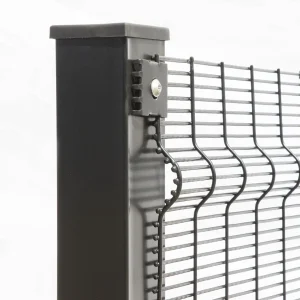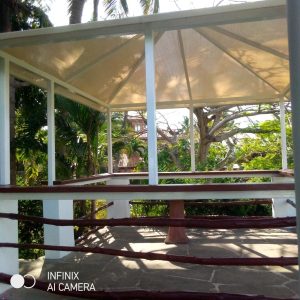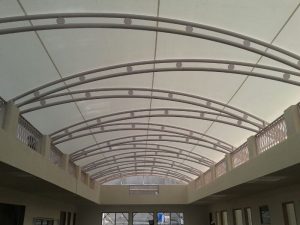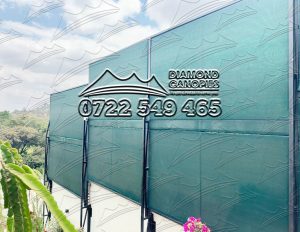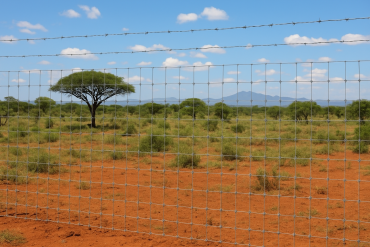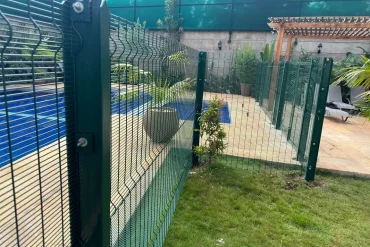Table of Contents
ToggleTents in Kenya: The Complete Buyer’s Guide for Events, Hospitality & Worksites
If you’re planning an outdoor event, expanding hospitality capacity, or adding covered workspace, high-quality tents are one of the most flexible and cost-effective structures you can invest in. This comprehensive guide by Diamond Canopies East Africa Limited explains what tents are, how they’re built, the major tent types, and detailed Design Specifications (DS) to help you select the right model for Kenya and the wider East African climate.
What is a Tent?
A tent is a relocatable, fabric-clad structure supported by frames, poles, air pressure, or tensile cables. Unlike permanent buildings, tents are engineered for rapid deployment, modular sizing, and easy transport, while still delivering weather protection, airflow, and branding surfaces. Modern commercial tents use advanced materials—aluminium, galvanized steel, PVC-coated polyester, HDPE mesh, polycarbonate windows—to achieve excellent durability in sun, salt air, dust, and seasonal rains common from Nairobi to Mombasa, Kisumu, Eldoret, Arusha and Kampala.
Why Choose a Tent from Diamond Canopies?
-
Speed to site: Install in hours or days, not weeks.
-
Modularity: Scale spans and lengths in 3–5 m bays as your audience grows.
-
All-weather resilience: UV-stabilised, waterproof, wind-rated systems suited to equatorial sun and coastal humidity.
-
Operational flexibility: Temporary, semi-permanent, or relocatable.
-
Branding: Large printable surfaces for sponsors and corporate identity.
-
Lifecycle value: Reusable, repairable, and rentable—cutting total cost of ownership.
How Tents Are Built (Core Components)
-
Frame/Pole System: Extruded 6061-T6 aluminium or hot-dip galvanized steel for strength and low maintenance.
-
Membrane: 650–900 g/m² PVC-coated polyester (blackout or translucent), poly-cotton canvas for safari, or stretch knit membranes for Bedouin tents (waterproofed and fire-retardant).
-
Anchoring: Ground stakes, ballasted blocks, chemical anchors, or baseplates bolted to concrete.
-
Sidewalls & Doors: Soft walls (plain, windowed, or clear), insulated wall panels, or hard ABS/PVC panels; single/double doors or roll-up shutter openings.
-
Drainage & Gutters: Integrated rain gutters between modules, perimeter drip edges.
-
Options: Flooring (ply on steel sub-frames, cassette floors), climate control (fans, evaporative coolers, AC), lighting, cable management, and fire safety kits (extinguishers, exit signage).
Major Tent Types & Detailed Design Specifications (DS)
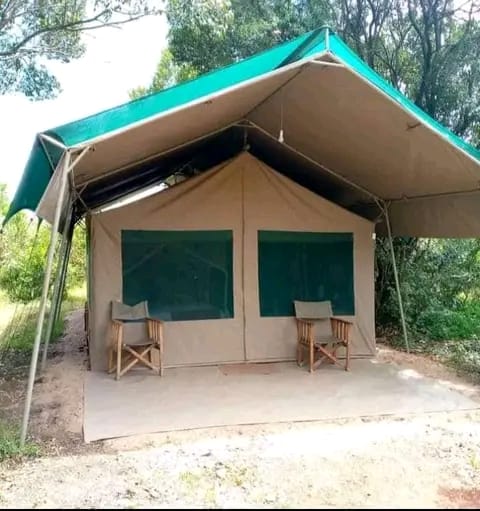
Below you’ll find the most common tent families we supply in East Africa, with typical use-cases and DS to guide selection. All specs are indicative; we customize per site, wind exposure, and usage.
1) Clear-Span Aluminium Marquee Tents (A-Frame)

Best for: Weddings, conferences, corporate galas, exhibitions, relief/medical camps needing unobstructed interiors.
Key Features:
-
No interior poles; maximum usable floor area.
-
Scalable widths and modular bay extensions.
-
Accepts flooring, HVAC, lining, chandeliers, and branding.
Typical DS:
-
Span Widths: 10 m, 15 m, 20 m, 25 m, 30 m (custom up to 50 m+).
-
Bay Increments: 3 m / 5 m.
-
Ridge Height: ~4.0–8.0 m (depends on span).
-
Frame: 6061-T6 anodized aluminium rafters with galvanized steel foot plates and purlins.
-
Membrane: 750–850 g/m² PVC, UV-stabilized, B1/M2 fire-retardant; blackout or translucent.
-
Wind Rating: Up to 90 km/h (higher ratings available with engineering and ballast).
-
Anchoring: 1.2–1.8 m ground stakes or precast concrete ballasts; chemical anchors on slabs.
-
Sidewalls: Solid PVC, French-window PVC, or clear panorama walls; optional rigid ABS panels.
-
Flooring: Cassette or ply-on-steel; load 350–500 kg/m².
-
Electrical Load: Sized per event; cable trays and distro boards available.
-
Branding: Full-roof skins, gables, or wall wraps via UV print.
-
Install Time: 1–3 days for 20×30 m with a trained crew.
2) High-Peak “Pagoda” / Pyramid Tents
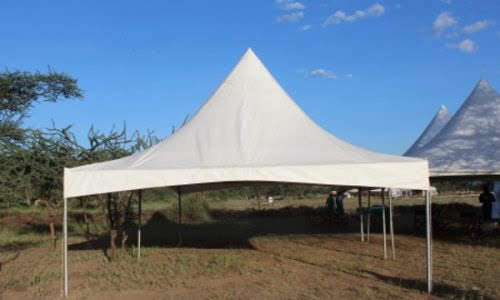
Best for: Reception checkpoints, garden parties, satellite bars, exhibition kiosks, and VIP pods.
Key Features:
-
Iconic high peak with tensioned mast.
-
Elegant look, fast setup, compact footprint.
Typical DS:
-
Footprints: 3×3 m, 4×4 m, 5×5 m, 6×6 m, 10×10 m.
-
Eave Height: ~2.2–2.8 m; Peak Height: 4.2–6.5 m.
-
Frame: Powder-coated steel or aluminium legs with tensioned centre mast.
-
Cover: 650–750 g/m² PVC, fire-retardant and waterproof.
-
Wind Rating: 60–80 km/h with proper anchoring.
-
Anchoring: Stakes, baseplates with ballast, or bolts to concrete.
-
Walls: Detachable soft walls (plain, windows, clear), mosquito mesh optional.
-
Guttering: Link multiple pagodas with valley gutters to form alleys.
-
Install Time: 30–90 mins per unit.
3) Stretch/Bedouin Tents (Freeform)
Best for: Boutique weddings, beach events, rooftop lounges, stage covers—where organic forms and fast deployment matter.
Key Features:
-
Sculptural look with multiple rigging points.
-
Conforms to uneven ground; great airflow.
Typical DS:
-
Sizes: 10×15 m, 15×20 m, 20×30 m (joinable).
-
Fabric: Multi-layer knitted membrane, waterproofed, UV-stabilised, FR treated.
-
Poles: Aluminium or wooden poles, adjustable heights.
-
Edge Rigging: Ratchet straps to pegs or ballast.
-
Wind Rating: 60–80 km/h (site-dependent; requires experienced rigging).
-
Walls: Typically open-sided; clip-on windbreak panels available.
-
Install Time: 2–6 hours depending on size and site.
4)
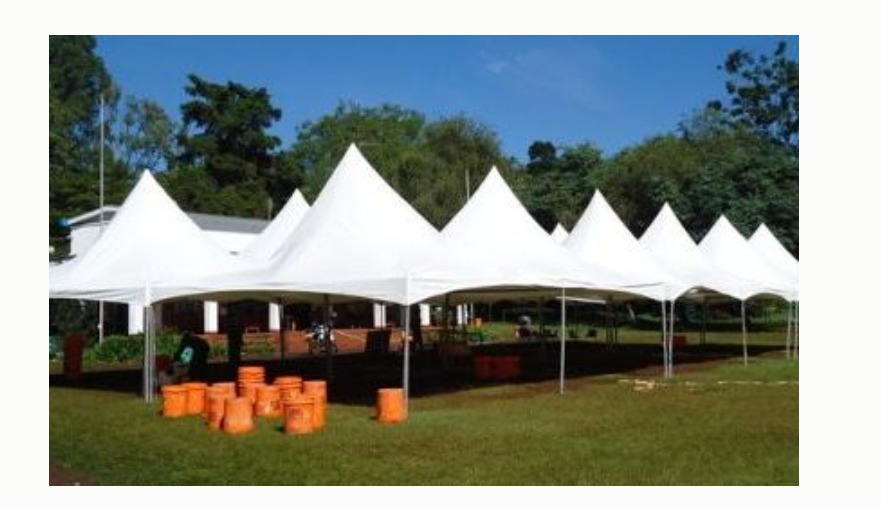
Best for: Brand activations, immersive experiences, projection theaters, festivals, greenhouses, and weather-resilient semi-permanence.
Key Features:
-
Spherical load path resists wind; iconic look.
-
Supports 360° projection, hanging loads on hubs.
Typical DS:
-
Diameters: 6 m, 10 m, 15 m, 20 m, 30 m+ (floor areas ~28–707 m²).
-
Frame: Powder-coated steel or aluminium struts with hub nodes.
-
Skin: 750–900 g/m² PVC; optional ETFE skylights; blackout for projection.
-
Wind Rating: 90–110 km/h with anchoring; snow load optional for highlands.
-
Access: Single/double doors, tunnel vestibules for HVAC.
-
Flooring: Circular cassette floors; platform levelling kits.
-
Branding: Full or partial wraps, interior projection.
-
Install Time: 1–3 days depending on diameter.
5) Inflatable Air-Supported & Air-Beam Tents
Best for: Rapid response (medical, NGO, military), mobile showrooms, sports tunnels where speed and minimal hardware are critical.
Key Features:
-
Either blower-assisted air domes (continuous pressure) or sealed air-beam frames (no continuous power).
-
Very fast to deploy; compact to transport.
Typical DS:
-
Sizes: 5×5 m kiosks to 20×30 m halls.
-
Material: Welded PVC or TPU beams; 650–750 g/m² PVC skins.
-
Setup: 5–30 minutes with electric or petrol blowers.
-
Wind Rating: 50–70 km/h; guy-ropes/ballast required.
-
Power: Continuous blower (air-supported) or only for inflation (air-beam).
-
Options: Windows, cable pass-throughs, HVAC sleeves, internal lighting.
6) Pole Tents (Traditional Peg & Pole)
Best for: Large social events on lawns and fairgrounds where staking is permitted and classic “swoop” aesthetics are desired.
Key Features:
-
Central poles create elegant peaks; economical for big footprints.
Typical DS:
-
Widths: 12 m, 18 m, 24 m, 30 m; lengths extend in 6 m bays.
-
Centre Poles: Aluminium or timber; side poles along perimeter.
-
Fabric: Heavy PVC or canvas, treated for UV and mildew.
-
Wind Rating: 60–80 km/h with deep stakes.
-
Ground: Requires penetrable soil; not ideal on concrete.
-
Walls: Zipped soft walls; clear panels for views.
-
Install Time: 1–2 days for large formats.
7) Safari & Lodge Canvas Tents
Best for: Eco-lodges, glamping, field research stations—semi-permanent hospitality in parks and coastal sites.
Key Features:
-
Aesthetic canvas with hard doors, verandahs, insulated flysheets.
-
Built for multi-season use; can include bathrooms and kitchens.
Typical DS:
-
Modules: 4×6 m, 5×8 m, 6×10 m (custom layouts).
-
Canvas: 420–550 gsm poly-cotton, ripstop, FR & anti-fungal.
-
Frames & Decks: Timber/steel hybrid on raised platforms to shed water.
-
Roofing: Double-roof fly for heat control; ventilated ridge.
-
Windows/Doors: Mesh + clear + canvas layering; lockable doors.
-
Insulation: Optional inner liners; solar kits for lighting.
-
Service Runs: Concealed plumbing, grey-water routing, and AC pre-wire.
8) Heavy-Duty Truss Tents & Stage Covers
Best for: Concerts, festivals, sporting events—structures that must support lighting, PA, and LED walls.
Key Features:
-
Engineered aluminium box truss grid; high point-load capacity.
Typical DS:
-
Spans: 10–30 m; height 6–12 m clear.
-
Truss: 290–520 mm box truss; rated rigging points 250–500 kg per node (engineered case-by-case).
-
Skin: Blackout PVC; optional scrims and acoustic baffles.
-
Wind Rating: 80–100 km/h with ballast plan and storm procedures.
-
Access: Roll-up backdrops, cable bridges, scaffold wings.
9) Quick-Up/Gazebo Tents (Pop-Up)
Best for: Market stalls, school events, roadshows, backyard shade—fast single-team deployment.
Key Features:
-
Scissor-frame gazebo; tool-free; fits in a pickup.
Typical DS:
-
Sizes: 2×2 m, 3×3 m, 3×4.5 m, 3×6 m.
-
Frame: Powder-coated steel or aluminium hex-leg; push-button hubs.
-
Fabric: 420D–600D polyester with PU or PVC coating; printable.
-
Anchoring: Guy ropes, sandbags, or stake pegs.
-
Wind Rating: 30–50 km/h; lower in gusty coastal conditions.
-
Walls: Zip-on; half-side counters for trade.
-
Setup: 2–10 minutes.
10) Warehouse & Worksite Tents (Industrial Canopies)
Best for: Logistics overflow, dry goods, construction laydown, vehicle bays, and agricultural processing under cover.
Key Features:
-
Semi-permanent clear-span with higher eaves and forklift doors.
Typical DS:
-
Spans: 15–40 m; heights 4–8 m at eave.
-
Cladding: Heavy PVC or insulated sandwich panels on sidewalls.
-
Openings: Roller shutters, hangar doors, dock levellers.
-
Wind Rating: 90–120 km/h depending on exposure.
-
Snow/Rain: Reinforced rafters; guttering to soakaways.
-
Floor: Concrete slab or metal deck; point loads specified for MHE.
Climate-Smart Design for Kenya & East Africa
-
UV & Heat: Choose UV-stabilised, light-coloured membranes, optional double-skin or insulated panels for coastal heat.
-
Rain & Gutters: Oversized gutters and downpipes; graded flooring to avoid pooling during long rains (Mar–May, Oct–Dec).
-
Wind Exposure: Conduct a site assessment; coastal gusts demand higher ballast and storm lashing plans.
-
Ventilation: Roof vents, mesh panels, or mechanical fans/AC; ensure adequate air changes for densified events.
-
Corrosion Control: Aluminium frames and hot-dip galvanized steel hardware for salt-air sites (Mombasa, Diani, Malindi).
-
Pest & Hygiene: Integrated mosquito mesh for hospitality tents; washable wall sets for events and medical use.
Safety & Compliance Essentials
-
Fire Safety: Membranes should meet B1/M2 or equivalent; maintain extinguishers, exits, and no-smoking policy.
-
Electrical: Use certified distribution boards, RCD protection, and overhead cable routing.
-
Structural Checks: Verify anchoring, inspect tension, re-tighten ratchets after first rains/winds.
-
Load Certificates: Especially for truss and stage covers—engineer sign-off for suspended loads.
-
Public Health: For kitchens/clinics, specify washable linings, proper drainage, and hand-wash points.
Sizing Your Tent (Quick Planning Guide)
-
Guest count & layout: Allow 1.0–1.5 m²/guest for banqueting, 0.6–0.8 m² for theatre seating, plus space for stages, buffets, bars, and back-of-house.
-
Site conditions: Measure clearances, underground services, prevailing wind, and access routes for vehicles.
-
Flooring & levelling: Uneven grounds may require levelling frames or raised decks, especially in rainy seasons.
-
Power & HVAC: Plan circuits, generator capacity, and airflow based on occupancy and time of day.
-
Branding & lighting: Decide on wall types (clear vs. solid), ceiling linings, fairy lights, chandeliers, or LED rigs.
Services from Diamond Canopies East Africa Limited include industrial warehouse tents Kenya
-
Consultation & Site Survey – We match tent type to your venue, season, and budget.
-
Design & Engineering – Drawings, load calcs, ballast plans, and branding layouts.
-
Supply (Sale or Hire) – From pop-ups to engineered clear-span and domes.
-
Installation & Project Management – Safe, fast builds with trained crews.
-
Accessories – Floors, furniture, lighting, AC, generators, sanitation units.
-
Maintenance – Cleaning, repairs, re-skins, storm check-ups, and training.
Frequently Asked Questions (FAQs) on stretch tents for events Kenya
Q1: Which tent is best for weddings in Nairobi or Naivasha?
A clear-span marquee delivers an open interior for décor and dance floors; add clear walls for lake views and cassette flooring for evening comfort.
Q2: Can tents withstand coastal wind and salt air?
Yes—aluminium frames, galvanized hardware, correct ballast, and storm-lash protocols make tents reliable on the coast. For high-wind forecasts, we provide reinforced anchoring and contingency plans.
Q3: Do you offer branded tents for roadshows?
Absolutely. We print roofs, gables, and walls for pagodas, pop-ups, and domes, with premium inks that resist UV fading.
Q4: Are tents hot in the afternoon?
We specify UV-reflective fabrics, roof vents, sidewall roll-ups, and HVAC options. Double-skin roofs and lighter colours reduce heat gain significantly.
Q5: What about permits and safety?
For large public events, we supply engineering documents, fire-retardancy certificates, and assist with local approvals and safety plans.
Choosing the Right Tent: A Quick Match
-
Corporate gala / wedding (200–800 pax): Clear-span marquee 15–25 m span, cassette floor, AC, blackout roof with chandeliers.
-
Garden cocktail / ticketing pods: 5×5 m pagodas linked with gutters; branded fascia.
-
Beach lounge / boutique event: Stretch tent 15×20 m with windbreak panels and ballast.
-
Brand activation / immersive dome: 10–20 m geodesic with projection-ready blackout skin.
-
Rapid response / medical: 8×12 m sealed air-beam tent with HVAC sleeves and washable walls.
-
Concert stage: 20 m truss cover with engineered rigging and ballast plan.
-
Market stall / SME roadshow: 3×3 m pop-up, printed canopy, counter wall.
-
Warehouse overflow: 25 m clear-span industrial canopy with rigid doors and gutters.
Maintenance & Lifecycle Tips of event tent hire kenya
-
Cleaning: Use approved PVC detergents; avoid abrasives to extend membrane life.
-
Storage: Dry before packing; store off the ground in ventilated areas.
-
Inspection: Check seams, keder tracks, ratchets, and stakes after each deployment.
-
Repairs: Heat-welded patches on PVC; replace worn webbing and zippers promptly.
-
Upgrades: Swap sidewalls (clear/solid), add insulation liners or hard doors as needs change.
Your Next Step
Whether you’re planning a wedding in Karen, a festival in Naivasha, a roadshow in Westlands, or coastal hospitality in Diani, Diamond Canopies East Africa Limited will engineer, supply, and install the tent solution that fits your site, season, and budget—with safety and style.



